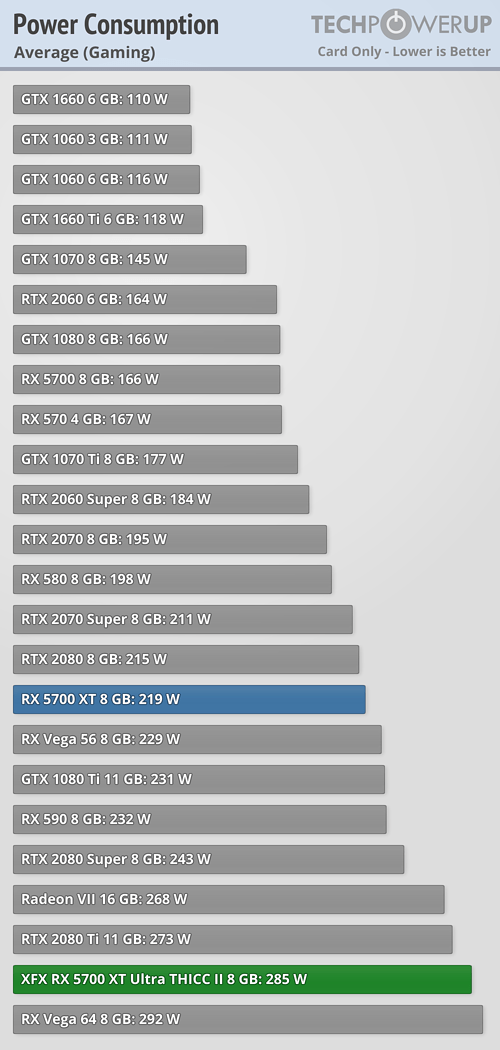- Joined
- May 22, 2015
- Messages
- 14,418 (3.89/day)
| Processor | Intel i5-12600k |
|---|---|
| Motherboard | Asus H670 TUF |
| Cooling | Arctic Freezer 34 |
| Memory | 2x16GB DDR4 3600 G.Skill Ripjaws V |
| Video Card(s) | EVGA GTX 1060 SC |
| Storage | 500GB Samsung 970 EVO, 500GB Samsung 850 EVO, 1TB Crucial MX300 and 2TB Crucial MX500 |
| Display(s) | Dell U3219Q + HP ZR24w |
| Case | Raijintek Thetis |
| Audio Device(s) | Audioquest Dragonfly Red :D |
| Power Supply | Seasonic 620W M12 |
| Mouse | Logitech G502 Proteus Core |
| Keyboard | G.Skill KM780R |
| Software | Arch Linux + Win10 |
If you're talking about the same architecture revision as I am, then yes, it kinda has to.They are clearly pushing the clock speeds way beyond efficiency on the XT model, it does not mean a bigger Navi in the same clock speed domain has to be inefficient.







 but as a pretty shoddy imho, Vega Nitro design > Navi Nitro design. Didn't dig this for some reason, liked that one more. Not as generic but not overly flashy, either... In comparison, Polaris Nitro is interesting to say the least (veeery boxy) and earlier 300 series... they actually looked real solid!
but as a pretty shoddy imho, Vega Nitro design > Navi Nitro design. Didn't dig this for some reason, liked that one more. Not as generic but not overly flashy, either... In comparison, Polaris Nitro is interesting to say the least (veeery boxy) and earlier 300 series... they actually looked real solid!
